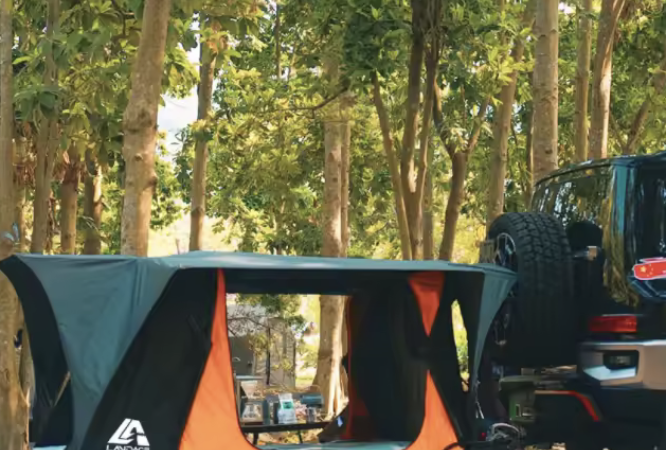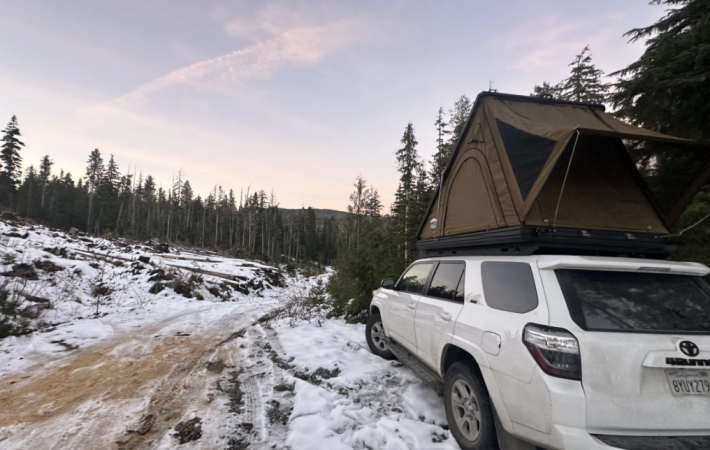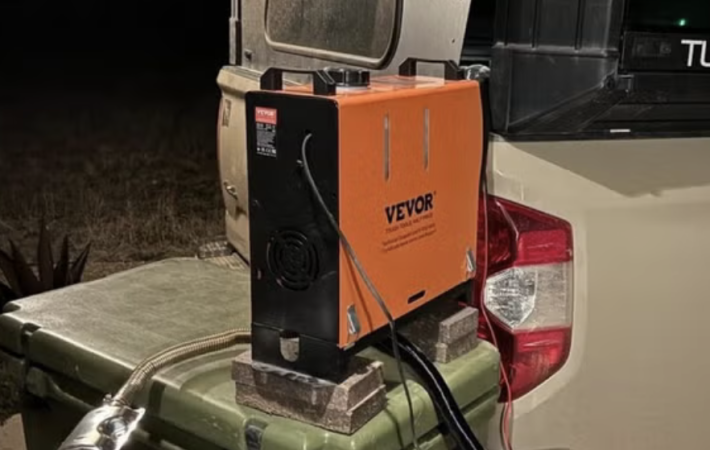What “cheap” really means
In today’s market, budget soft-shell RTTs typically land around $1,000–$1,300 USD (about $1,350–$1,800 CAD) for a 2–3-person tent. A well-known example is the Smittybilt Overlander and the ClassicPluss, which lists basic specs like a 600D polyester body, PVC travel cover, and a simple telescoping ladder in that range.
Mid-tier tents from major brands (often with upgraded fabrics, frames, and hardware) commonly sit around $2,000–$3,000 CAD. For reference, Thule/Tepui/RoofTopTents models like the Foothill, Approach, and Adventure series list between ~$2,200–$4,000 CAD depending on size and spec.
Premium hardshells with fast set-up, stiffer shells, and higher-end interiors run $3,500–$5,000+ USD (roughly $4,700–$6,800 CAD). iKamper’s Skycamp 3.0 family and Sky Luxe are clear benchmarks here.
Core trade-offs at lower price points
Going “cheap” doesn’t mean unsafe. It means accepting trade-offs:
- Set-up speed: Soft-shells take longer and use more poles; hardshells pop in ~1 minute. (Budget = slower; premium = fastest.)
- Weight & bulk: Budget 2–3-person soft-shells often weigh ~115–130 lb; premium hardshells commonly hit ~160–190 lb. Plan rack and vehicle ratings accordingly.
- Materials & hardware: Entry tents use serviceable polyester, basic zips, and standard ladders; premium lines add poly-cotton canvas, better coatings, stiffer floors, and stronger hinges.
Features where you can save money (and feel fine about it)
- Annex & extra rooms: Skip at purchase; add later if you actually need standing space or gear storage.
- Interior gadgets: LED strips, shoe bags, and small organisers are nice-to-haves. You can add or DIY these cheaply.
- Exotic fabrics: Standard 600D polyester with decent waterproofing is perfectly usable for 3-season trips. Upgrade only if you camp in harsh wind or extended rain systems.
- Shell type (if your priority is budget): Soft-shells deliver solid value if you’re okay with a few extra minutes of set-up. You can still camp every weekend without a hardshell.
Features we don’t recommend cheaping out on
- Floor & base rigidity: Flimsy bases flex, squeak, and fatigue fast. Look for aluminum sandwich floors or proven composite designs; this is comfort and longevity in one.
- Mattress quality: Thin foam equals cold spots and hip pressure. If the included pad is minimal, budget for a topper or self-inflating upgrade. (Note: some premium tents now include upgraded mattresses by default.)
- Ladder & hinges: These are safety components. Aim for solid, rated ladders and stainless/robust hinges to avoid mid-trip failures.
- Weather seals & cover: The PVC travel cover and seam work matter. A leaky cover will soak your bedding while driving.
Safety & fit: the real non-negotiables
Before you hit “buy,” two checks matter more than any feature list:
- Dynamic roof load rating: Your vehicle + rack needs to handle the moving weight of the tent (and crossbars). Ensure the dynamic rating ≥ tent weight, and remember to account for rack weight if your vehicle guidance requires it. (Static capacity is higher; dynamic is the limiting case for driving.)
- Bar spread & support: Most tents want ~32–40 inches front-to-back spread (brand-specific). Too tight or too wide stresses the floor. Confirm your tent’s spec; many manufacturers publish minimum/maximum spreads.
A simple price map (so you can set expectations)
- Budget (value soft-shell): ~$1,350–$1,800 CAD starter setups; solid for casual 3-season trips if you pick a reputable brand and respect load ratings.
- Mid-tier (refined soft-shell/entry hardshell): $2,000–$3,000 CAD with better fabrics, coatings, and hardware; often lighter/stronger frames and improved ventilation.
- Premium (fast hardshells, top materials): $4,700–$6,800 CAD equivalent; fastest set-up, stiffer floors, upgraded mattresses, and polished details.
Our honest recommendation if you’re chasing value
Start with a proven budget or mid-tier soft-shell if:
- You camp <10 trips/year, mostly spring–fall.
- Set-up time matters but isn’t a deal-breaker.
- You’re fine adding comfort upgrades later (mattress topper, anti-condensation mat, annex if needed).
Jump straight to a premium hardshell if:
- You camp often, in variable weather, and want 60-second set-up and pack-down.
- Your vehicle has the load rating and you value lower wind noise and a smaller aero penalty.
Quick checklist before you buy “cheap”
- Confirm dynamic roof rating (vehicle manual + rack specs).
- Check tent weight and bar spread compatibility.
- Plan bedding comfort (mattress upgrade if needed).
- Inspect cover quality, seam work, and ladder hardware.
- Buy from a reputable line with accessible parts and support.
If your budget sits below new-entry pricing, skip “new” and shop used—Facebook Marketplace and Craigslist are your best bets because lots of people buy RTTs and barely use them. Do a full setup demo, check floor/hinges for flex or cracks, inspect fabric/fly and the PVC cover for leaks, and make sure the ladder + all mounting hardware are included. Verify tent weight and bar spread against your rack and vehicle’s dynamic rating before paying. As a rough guide, expect ~60–70% of new for near-mint, 40–60% for good condition, and 20–35% for fixer-uppers.
Got questions about your setup? We’re a Canadian, Vancouver Island–based rooftop tent team with 10+ years’ experience, call +1 250-740-1844 and we’ll be happy to help.







Leave a comment
Your email address will not be published. Required fields are marked *